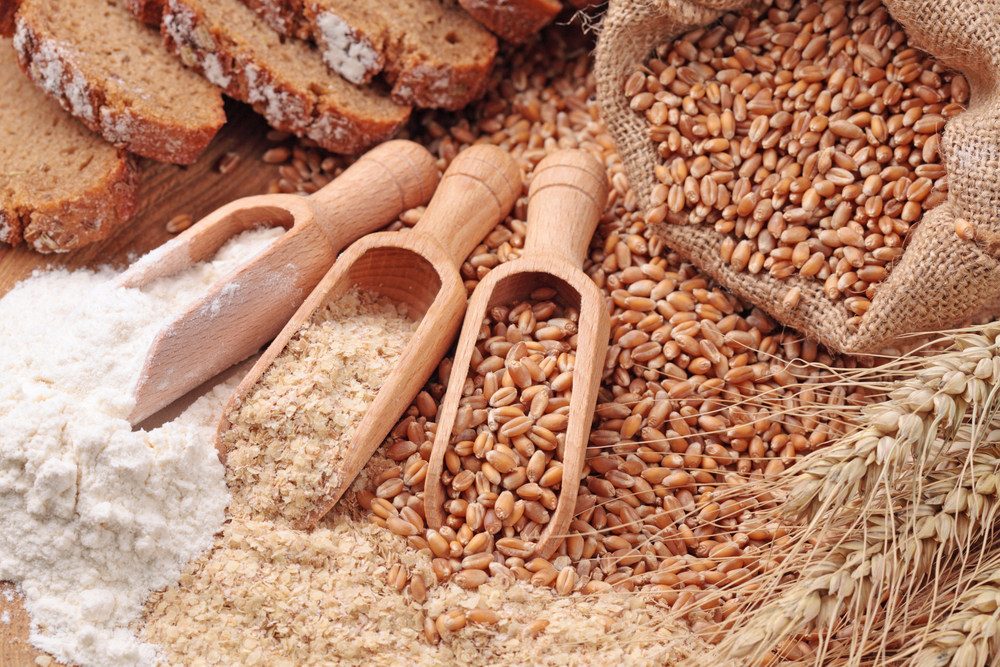Lifting the Hood on Whole Grains

BY CRAIG T. HUNT RDN
Whole-grains are one of the rising nutritional mega stars of 2014. By now, most people are familiar with the term, but if asked to provide a definition of whole-grains, many people, including health professionals, would fumble. A February 2014 Chicago Tribune article mentions that “Most people do not consume whole grains in amounts that can be beneficial, also many people, even health professionals, are confused about the relationship between whole grain and fiber.” I concur with that statement, and when trying to define whole grains, it may seem a bit self-explanatory, but the U.S definition may surprise you.
“Whole grains or foods made from them contain all the essential parts and naturally-occurring nutrients of the entire grain seed in their original proportions. If the grain has been processed (e.g., cracked, crushed, rolled, extruded, and/or cooked), the food product should deliver the same rich balance of nutrients that are found in the original grain seed. This definition means that 100% of the original kernel – all of the bran, germ and endosperm – must be present to qualify as a whole grain.” Surprisingly, in Europe, there is no legal endorsed definition for what constitutes a whole grain, and many countries have different standards, or no standards.
At your local grocery store, many food labels have a golden, ‘Whole Grain’ stamp on the packaging (see below), allowing easy recognition of a whole grain product. To qualify for the stamp, a food must contain half a serving of whole grains; the equivalent of 8 grams of whole grains. An entire single serving must contain 16 grams of whole grains, translating to about 1.5 tablespoons of whole grain per serving. This may not sound like much, but Americans are lagging in their consumption of 3 or more servings of whole grains per day recommended by Myplate.gov. The phrase, “make half your grains whole” is a catchy way to remember to mix white and brown rice together, to use whole wheat bread, and to look for the golden stamp. Note that not all whole-grain foods are using the golden stamp, as its use is monetarily associated with the number of units sold.

Because of popularity and science-based health benefits of whole grains, an increasing number of products are including whole grains in their ingredients. To keep up with the rising interest and complexity, in January 2014, the Whole Grains Council drafted a letter to the FDA requesting three different levels of whole grains be allowed, including:
1. 100% whole grain.
2. Whole Grain Foods (foods with 50% or more of the grain is whole).
3. Foods contributing whole grains.
Let’s lift the hood a bit further and ask the question: what components in whole grains provide the health-boosting properties? There are plenty of studies supporting whole grain intake being associated with a reduced risk of type-2 diabetes and heart disease. Besides being higher in vitamins and minerals, one of the main health-boosting nutrients is fiber. In fact, the FDA has approved several fiber-related health claims, such as: diets low in fat and rich in high-fiber foods may reduce the risk of certain cancer; diets low in fat and rich in soluble fiber may reduce the risk of heart disease. Did you catch the words soluble fiber – what’s that? Soluble fibers are a type of complex carbohydrate found in foods like mushrooms, barley, oats, and legumes that have the special ability to bind with cholesterol in your intestine and remove it from your body.
If you’re one of the Americans looking for ways to boost your intake of whole grains, here are a few Whole-Grains Council suggestions:
· Substitute half the white flour with whole wheat flour in your regular recipes.
· Add half a cup of cooked wheat or rye berries, wild rice, brown rice, or barley to your favorite canned or home-made soup.
· Make risottos, pilafs, and other rice-like dishes with whole grains such as barley, brown rice, millet, quinoa, or sorghum.
· Buy whole grain pasta or one that blends part whole wheat, part white.
So now if someone asks you about whole grains you can mention that they contain the bran, germ and endosperm, and supply a good source of fiber to boot.
